🐈⬛🐈🎃🍂🍁
🐈⬛🐈🎃🍂🍁


When witches go riding, and black cats are seen, the moon laughs and whispers, 'tis near Halloween 🎃🖤🐾
More Posts from Monstrous-mind and Others

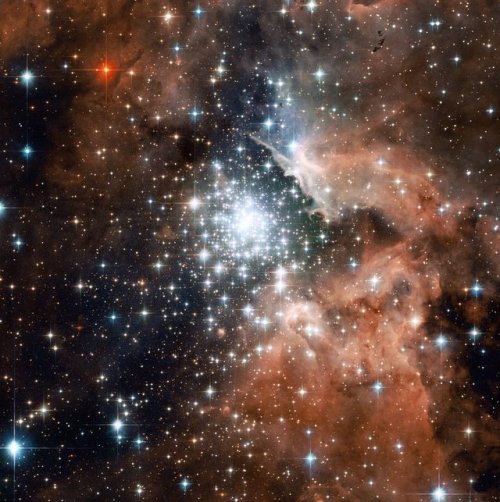
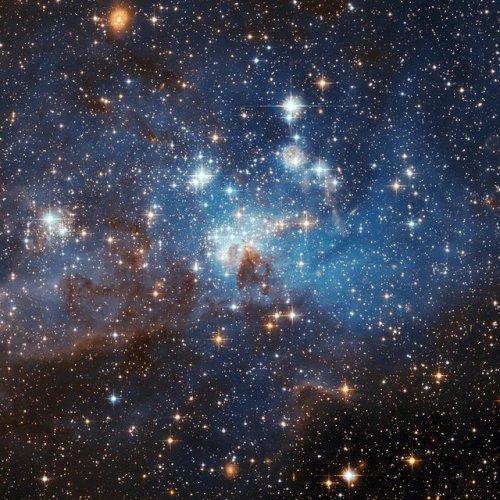
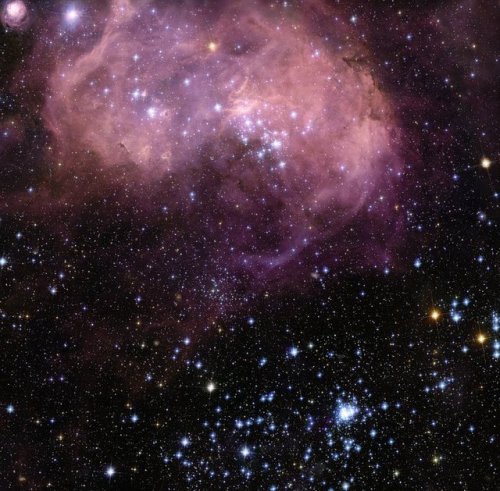
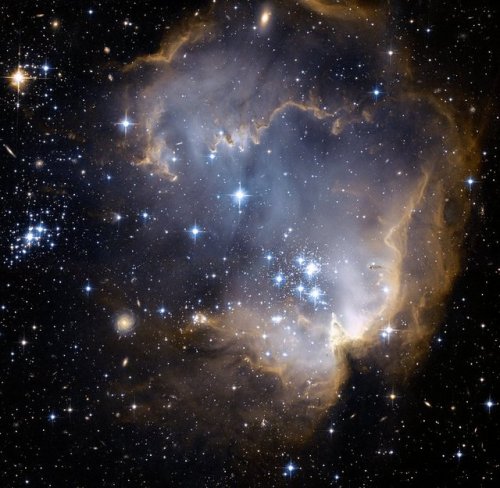
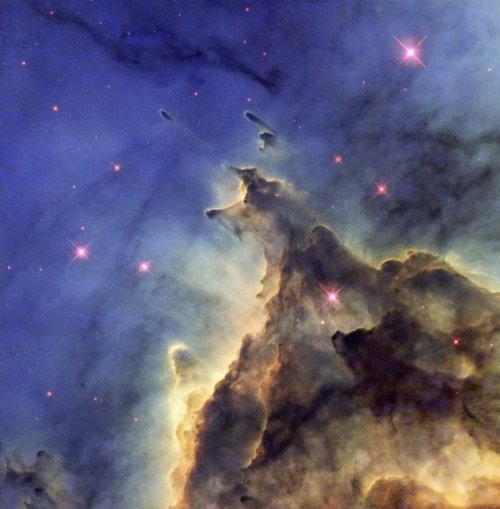
Star-forming regions amid gas and dust taken by the Hubble Space Telescope. (NGC 2467, NGC 3603, Star forming region in the Large Magellanic Cloud (LMC), N11, N90 and NGC 2174)
Image credit: NASA/ESA & Hubble
🐈🌌🚀



Alien Directed by Ridley Scott (1979)
🍂🍁🎃☠️

Autumn Garden by Boris Groh

The View Toward M101 : Big, beautiful spiral galaxy M101 is one of the last entries in Charles Messier’s famous catalog, but definitely not one of the least. About 170,000 light-years across, this galaxy is enormous, almost twice the size of our own Milky Way galaxy. M101 was also one of the original spiral nebulae observed by Lord Rosse’s large 19th century telescope, the Leviathan of Parsontown. M101 shares this modern telescopic field of view with spiky foreground stars within the Milky Way and a companion dwarf galaxy NGC 5474 (lower right). The colors of the Milky Way stars can also be found in the starlight from the large island universe. Its core is dominated by light from cool yellowish stars. Along its grand design spiral arms are the blue colors of hotter, young stars mixed with obscuring dust lanes and pinkish star forming regions. Also known as the Pinwheel Galaxy, M101 lies within the boundaries of the northern constellation Ursa Major, about 23 million light-years away. NGC 5474 has likely been distorted by its past gravitational interactions with the dominant M101. via NASA

List of extrasolar candidates for liquid water
The following list contains candidates from the list of confirmed objects that meet the following criteria:
Confirmed object orbiting within a circumstellar habitable zone of Earth mass or greater (because smaller objects may not have the gravitational means to retain water) but not a star
Has been studied for more than a year
Confirmed surface with strong evidence for it being either solid or liquid
Water vapour detected in its atmosphere
Gravitational, radio or differentation models that predict a wet stratum
55 Cancri f

With a mass half that of Saturn, 55 Cancri f is likely to be a gas giant with no solid surface. It orbits in the so-called “habitable zone,” which means that liquid water could exist on the surface of a possible moon. ]
Proxima Centauri b

Proxima Centauri b is an exoplanet orbiting in the habitable zone of the red dwarfstar Proxima Centauri, which is the closest star to the Sun and part of a triple star system. It is located about 4.2 light-years from Earth in the constellation of Centaurus, making it the closest known exoplanet to the Solar System.
Gliese 581c

Gliese 581c gained interest from astronomers because it was reported to be the first potentially Earth-like planet in the habitable zone of its star, with a temperature right for liquid water on its surface, and by extension, potentially capable of supporting extremophile forms of Earth-like life.
Gliese 667 Cc

Gliese 667 Cc is an exoplanet orbiting within the habitable zone of the red dwarf star Gliese 667 C, which is a member of the Gliese 667 triple star system, approximately 23.62 light-years away in the constellation of Scorpius.
Gliese 1214 b

Gliese 1214 b is an exoplanet that orbits the star Gliese 1214, and was discovered in December 2009. Its parent star is 48 light-years from the Sun, in the constellation Ophiuchus. As of 2017, GJ 1214 b is the most likely known candidate for being an ocean planet. For that reason, scientists have nicknamed the planet “the waterworld”.
HD 85512 b

HD 85512 b is an exoplanet orbiting HD 85512, a K-type main-sequence star approximately 36 light-years from Earth in the constellation of Vela.
Due to its mass of at least 3.6 times the mass of Earth, HD 85512 b is classified as a rocky Earth-size exoplanet (<5M⊕) and is one of the smallest exoplanets discovered to be just outside the inner edge of the habitable zone.
MOA-2007-BLG-192Lb

MOA-2007-BLG-192Lb, occasionally shortened to MOA-192 b, is an extrasolar planet approximately 3,000 light-years away in the constellation of Sagittarius. The planet was discovered orbiting the brown dwarf or low-mass star MOA-2007-BLG-192L. At a mass of approximately 3.3 times Earth, it is one of the lowest-mass extrasolar planets at the time of discovery. It was found when it caused a gravitational microlensing event on May 24, 2007, which was detected as part of the MOA-II microlensing survey at the Mount John University Observatory in New Zealand.
Kepler-22b

Kepler-22b, also known by its Kepler object of interest designation KOI-087.01, is an extrasolar planet orbiting within the habitable zone of the Sun-like star Kepler-22. It is located about 587 light-years (180 pc) from Earth in the constellation of Cygnus. source
🔭🌃🌌

M44, the beehive Cluster in Cancer constellation
Credit: Alan Dyer
🌄🍂🍁🍃🎃












Was Earth Born With Life On It?
“By finding graphite deposits in zircons that are 4.1 billion years old, graphite deposits that show this carbon-12 enhancement, we now have evidence that life on Earth goes back at least 90% of Earth’s history, and possibly even longer! After all, finding the remnants of organic matter in a certain location means the organic matter is at least as old as the location it’s buried in, but it could still be even older. This is so early that it might make you think that perhaps this life didn’t originate here on Earth, but that Earth was born with life. And this could really, truly be the case.”
How old is life on Earth? If all you had to go on was the fossil record, you’d run into severe trouble once you went back more than one or two billion years, as all your rock would have metamorphosed, making examination and identification of fossils impossible. But recently, we’ve discovered another method: to measure the isotopic content of carbon deposits in ancient rock formations. The carbon-12 to carbon-13 ratio is a surefire signature of life, and tells us that life on Earth goes back at least 4.1 billion years: 90% of the age of our planet. Could this be the hint we’ve needed to conclude that life on Earth actually predates the Earth itself? It’s not quite certain, but the beauty of science is we can always test it and find out! Here’s how.
-
 kayceee13 reblogged this · 6 months ago
kayceee13 reblogged this · 6 months ago -
 ambroseandmox reblogged this · 7 months ago
ambroseandmox reblogged this · 7 months ago -
 apgeeksout reblogged this · 7 months ago
apgeeksout reblogged this · 7 months ago -
 stoneheart-kel liked this · 8 months ago
stoneheart-kel liked this · 8 months ago -
 rainbowaurakitten reblogged this · 9 months ago
rainbowaurakitten reblogged this · 9 months ago -
 rainbowaurakitten liked this · 9 months ago
rainbowaurakitten liked this · 9 months ago -
 moonchild-xxoo reblogged this · 9 months ago
moonchild-xxoo reblogged this · 9 months ago -
 starlitedreams reblogged this · 9 months ago
starlitedreams reblogged this · 9 months ago -
 caramelatte32 reblogged this · 9 months ago
caramelatte32 reblogged this · 9 months ago -
 vanillachaiiii liked this · 9 months ago
vanillachaiiii liked this · 9 months ago -
 tech-sapphy liked this · 1 year ago
tech-sapphy liked this · 1 year ago -
 nebula100 liked this · 1 year ago
nebula100 liked this · 1 year ago -
 foxmeowwoof liked this · 1 year ago
foxmeowwoof liked this · 1 year ago -
 milo-sky-404 liked this · 1 year ago
milo-sky-404 liked this · 1 year ago -
 nuttydetectivedaze liked this · 1 year ago
nuttydetectivedaze liked this · 1 year ago -
 moonchild-xxoo reblogged this · 1 year ago
moonchild-xxoo reblogged this · 1 year ago -
 shadowsnlite liked this · 1 year ago
shadowsnlite liked this · 1 year ago -
 guy60660 liked this · 1 year ago
guy60660 liked this · 1 year ago -
 thoreauartdesign reblogged this · 1 year ago
thoreauartdesign reblogged this · 1 year ago -
 shorthairand15books reblogged this · 1 year ago
shorthairand15books reblogged this · 1 year ago -
 coziest-season reblogged this · 1 year ago
coziest-season reblogged this · 1 year ago -
 emmie6 liked this · 1 year ago
emmie6 liked this · 1 year ago -
 casiescreatures reblogged this · 1 year ago
casiescreatures reblogged this · 1 year ago -
 koineko2009 liked this · 1 year ago
koineko2009 liked this · 1 year ago -
 ambroseandmox reblogged this · 1 year ago
ambroseandmox reblogged this · 1 year ago -
 jukeboxofjellycat reblogged this · 1 year ago
jukeboxofjellycat reblogged this · 1 year ago -
 moonchild-xxoo reblogged this · 1 year ago
moonchild-xxoo reblogged this · 1 year ago -
 moonchild-xxoo liked this · 1 year ago
moonchild-xxoo liked this · 1 year ago -
 naturecatluvr reblogged this · 1 year ago
naturecatluvr reblogged this · 1 year ago -
 naturecatluvr liked this · 1 year ago
naturecatluvr liked this · 1 year ago -
 tenacioussweetsfox reblogged this · 1 year ago
tenacioussweetsfox reblogged this · 1 year ago -
 tenacioussweetsfox liked this · 1 year ago
tenacioussweetsfox liked this · 1 year ago -
 kamy987 reblogged this · 1 year ago
kamy987 reblogged this · 1 year ago -
 the-green-faerie liked this · 1 year ago
the-green-faerie liked this · 1 year ago -
 shanahb reblogged this · 1 year ago
shanahb reblogged this · 1 year ago -
 xmooncatxx reblogged this · 1 year ago
xmooncatxx reblogged this · 1 year ago -
 zoebeltran liked this · 1 year ago
zoebeltran liked this · 1 year ago -
 greencrystalwitchyness liked this · 1 year ago
greencrystalwitchyness liked this · 1 year ago -
 greencrystalwitchyness reblogged this · 1 year ago
greencrystalwitchyness reblogged this · 1 year ago -
 eisbar777 reblogged this · 1 year ago
eisbar777 reblogged this · 1 year ago -
 eisbar777 liked this · 1 year ago
eisbar777 liked this · 1 year ago -
 strawberrypasteljuice reblogged this · 1 year ago
strawberrypasteljuice reblogged this · 1 year ago -
 strawberrypasteljuice liked this · 1 year ago
strawberrypasteljuice liked this · 1 year ago -
 schreibaby-of-the-skies liked this · 1 year ago
schreibaby-of-the-skies liked this · 1 year ago -
 bluej25 liked this · 1 year ago
bluej25 liked this · 1 year ago -
 seramicdragon reblogged this · 1 year ago
seramicdragon reblogged this · 1 year ago -
 foresthuanted liked this · 1 year ago
foresthuanted liked this · 1 year ago -
 margflower liked this · 1 year ago
margflower liked this · 1 year ago
My ambition is handicapped by laziness. -C. Bukowski Me gustan las personas desesperadas con mentes rotas y destinos rotos. Están llenos de sorpresas y explosiones. -C. Bukowski. I love cats. Born in the early 80's, raised in the 90's. I like Nature, Autumn, books, landscapes, cold days, cloudy Windy days, space, Science, Paleontology, Biology, Astronomy, History, Social Sciences, Drawing, spending the night watching at the stars, Rick & Morty. I'm a lazy ass.
222 posts